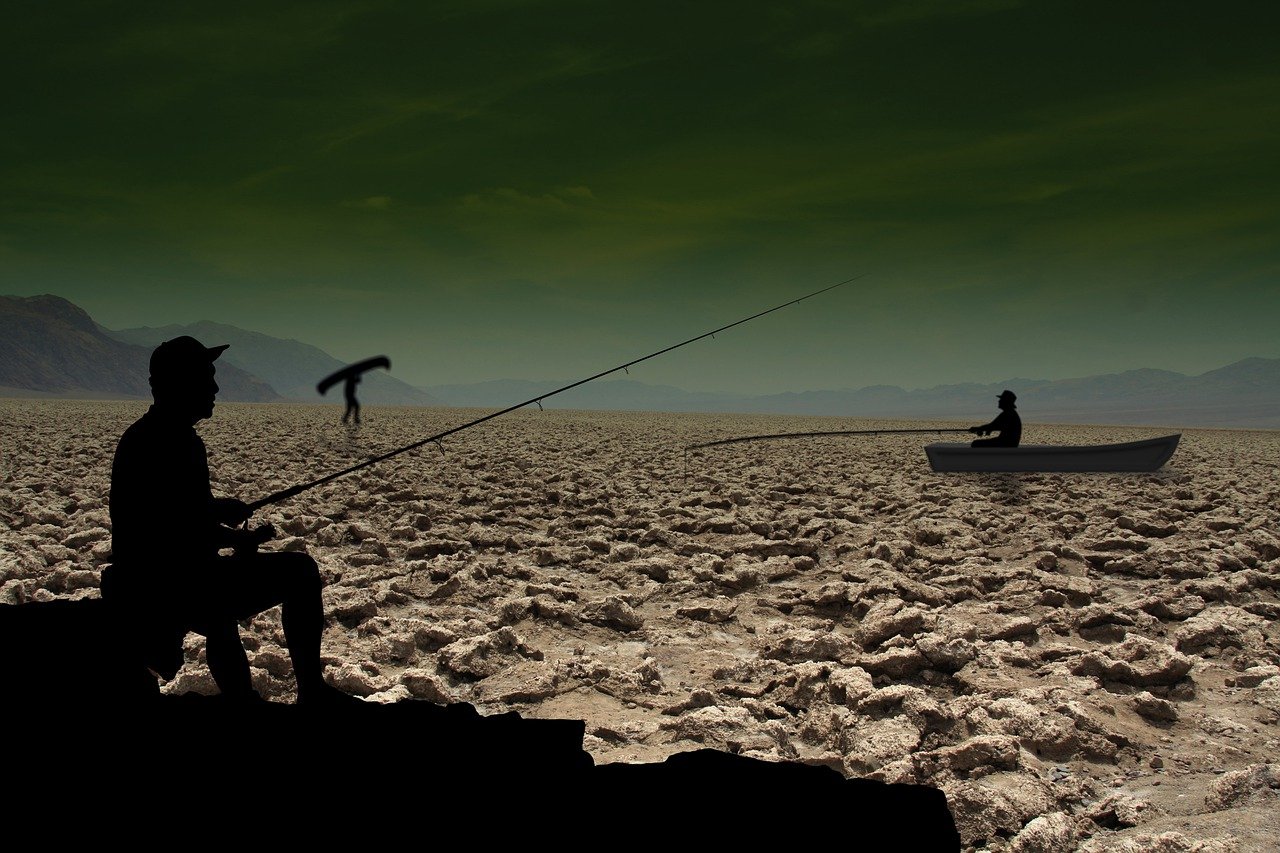
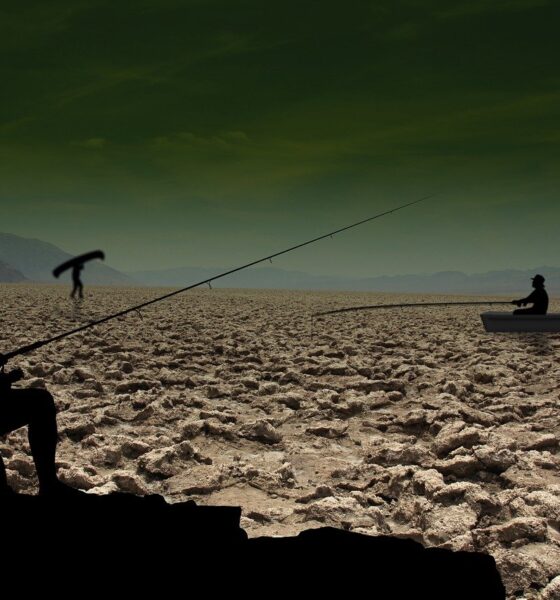
Earth
The wildfires, floods, and heatwaves: Understanding the science behind climate change
The stories we tell today will define the world that future generations inherit. Will they look back and see a world that acted in time, or a world that failed to change until it was too late?
In the heart of the Amazon rainforest, one of the most biodiverse places on Earth, a massive wildfire raged through the thick, lush greenery. This wasn’t just any fire; it was a calamity that consumed more than 17 million animals in its path, a chilling reminder of how the destruction of nature can reverberate across ecosystems. The Amazon, often referred to as the “lungs of the Earth,” plays a pivotal role in managing the planet’s climate. Yet, the actions of humanity—deforestation, illegal logging, and deliberate fires for agricultural purposes—have not only caused immeasurable loss to wildlife but have also accelerated climate change. The forest’s destruction led to a dangerous feedback loop, intensifying global weather patterns in ways that humans had never anticipated.
Fast forward to 2018, and the monsoon rains that battered Kerala, a state in India, were an equally dire omen. What began as an ordinary August downpour escalated into one of the deadliest floods in the region in almost a century. Rivers overflowed, breaking through dams and inundating vast swathes of land. Entire towns were submerged. Hundreds of lives were lost, and the devastation reached far beyond the physical damage, triggering social and economic upheaval. The aftermath left thousands homeless, as people sought refuge in makeshift shelters. The floods in Kerala were not an isolated incident; in fact, they were a warning from nature, signaling a world grappling with extreme weather events, made worse by human-induced climate change. The same was the case with 2024 Wayanad landslides.
And this global pattern of violent weather doesn’t stop in the tropics. In recent years, a blistering heatwave has swept across parts of North America. The US and Canada, known for their cold winters, have experienced record-breaking summer temperatures, an anomaly that scientists have linked directly to climate change. Oregon, once known for its temperate weather, saw the largest wildfire in its history, spurred by the heatwave. This was not just a local disaster—it was part of a larger, worrying trend in which global warming is creating the conditions for wildfires, floods, and heatwaves to proliferate at an unprecedented rate.
Climate change refers to significant, long-term shifts in weather patterns and temperatures.
These are not just isolated incidents. They are signs of a planet in distress, a planet experiencing the devastating effects of climate change, a phenomenon that is rapidly altering our environment and our lives.
The Science Behind the Crisis
Climate change refers to significant, long-term shifts in weather patterns and temperatures. These changes can manifest in a variety of ways: from prolonged droughts and unseasonal rains to extreme heatwaves and hurricanes. The root cause of today’s accelerated climate change is primarily human activity, particularly the burning of fossil fuels, deforestation, and industrial emissions, which release greenhouse gases like carbon dioxide into the atmosphere.
The Earth’s climate has always undergone natural variations—shifting from ice ages to warmer periods over millennia. However, what we are witnessing today is a much more rapid and intense change, driven by human actions. According to scientists, the Earth’s average temperature has risen by approximately 1.1°C since the late 19th century, with the past few decades seeing a rate of warming unprecedented in the geological record. The current trajectory suggests that global temperatures could rise by another 1-2°C by the end of the century, which would have catastrophic implications for both human and natural systems.
The impacts of this warming are already being felt globally. Melting ice caps and glaciers, rising sea levels, shifting weather patterns, and more frequent extreme weather events are some of the most visible signs. The Amazon rainforest, which once functioned as a massive carbon sink, is now a source of carbon emissions due to deforestation and wildfires. Meanwhile, heatwaves in parts of Europe and North America have reached previously unimaginable levels, set new temperature records and causing widespread harm.
A Global Phenomenon: From Kerala to Oregon
The devastating Kerala floods of 2018 were preceded by a series of warnings. The state’s weather patterns had been shifting, with increasingly unpredictable rainfall, leading to swollen rivers and the overflowing of dams. Once a relatively regular occurrence, floods in Kerala became more intense and frequent over time. Experts argue that climate change, through the intensification of the monsoon season and rising sea levels, has exacerbated the situation. But Kerala is not alone. Across the world, regions that were once resilient to extreme weather are now facing unprecedented levels of flooding, wildfires, and other disasters.
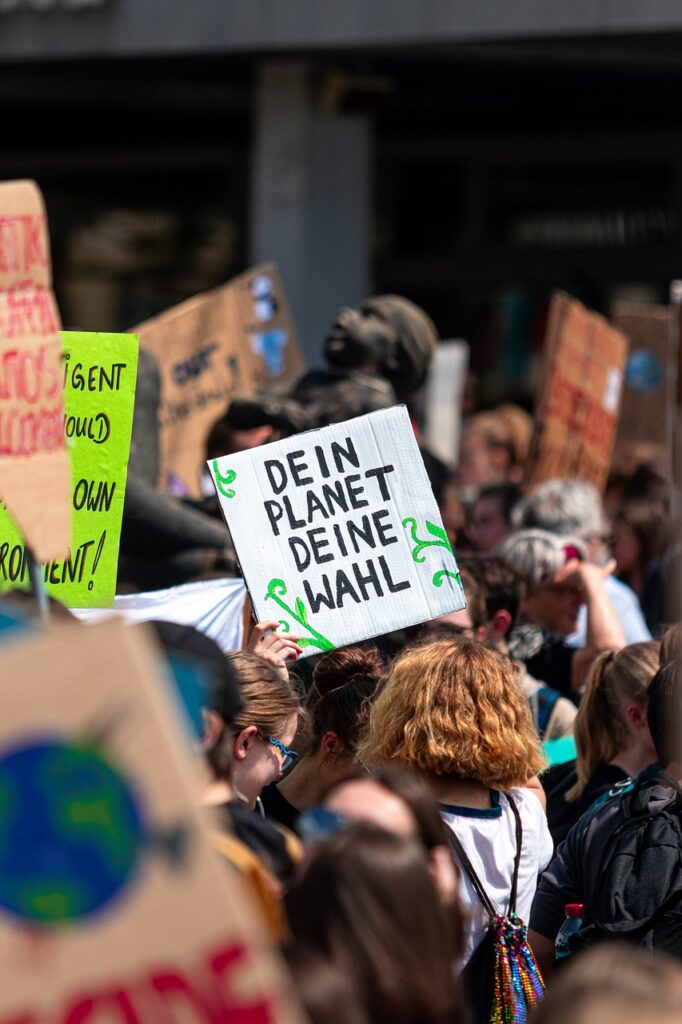
In 2020, when a record heatwave struck North America, temperatures in the Pacific Northwest soared to levels never seen before. Oregon, a state known for its temperate climate, reported its highest-ever temperatures. This heatwave triggered wildfires that devastated millions of acres of forest and caused significant loss of life. The fires were not simply a result of hot weather, but of the conditions created by climate change—dry forests, extreme heat, and shifting weather patterns all came together to fuel the fires.
Similarly, across the Atlantic, parts of Europe experienced an unusually harsh summer, with wildfires ravaging Spain, Portugal, and southern France. These fires were not natural events but were made more intense by the warming climate. Even in regions like Siberia, where wildfires were once rare, extreme temperatures and dry conditions have now turned vast areas into tinderboxes.
The Growing Threat: What the Future Holds
The world’s climate is now so volatile that extreme weather events are no longer an anomaly. They are becoming the new normal. Rising temperatures are leading to extreme heatwaves, higher sea levels are threatening coastal communities, and shifting weather patterns are disrupting ecosystems and agriculture. We are seeing longer droughts, more intense storms, and unpredictable rainfall, all of which are affecting millions of people across the globe.
In the coming decades, the situation is expected to worsen. According to scientists, we are on track to exceed a 1.5°C rise in global temperatures by 2050, with the potential for far-reaching consequences. Sea levels are projected to rise, displacing millions of people, while agriculture will suffer due to unpredictable rainfall and extreme temperatures. Already vulnerable regions, such as the Pacific Islands, will be the hardest hit, while major cities like New York, Mumbai, and Jakarta are all at risk of flooding.
Rising Temperatures and Their Far-reaching Effects
Even small changes in the Earth’s temperature can have profound impacts. A temperature-increase of just 1.5°C could lead to the irreversible melting of polar ice caps, resulting in a rise in sea levels that would submerge entire cities. Rising temperatures can also trigger the release of methane from thawing permafrost, a potent greenhouse gas that could accelerate global warming even further.
The stories from the Amazon, Kerala, Oregon, and beyond serve as stark reminders that the climate crisis is not a future problem—it is a present-day reality
One of the most troubling aspects of this warming is how it is changing the planet’s ecosystems. Species that once thrived in specific temperature ranges are now struggling to survive. Many are migrating to cooler areas, while others face extinction. As habitats shrink and weather patterns change, the very fabric of biodiversity is at risk.
Can We Change Course?
The question now is: Can we reverse or at least slow down these changes? While the situation is dire, scientists and environmentalists believe that immediate action can still mitigate the worst impacts of climate change. Transitioning to renewable energy sources, reducing deforestation, and investing in sustainable agricultural practices are essential steps. Governments, corporations, and individuals all have a role to play in ensuring that we shift towards a more sustainable and resilient future.
There is still time to act, but the window is closing fast. The more we delay, the more severe the impacts will be. The stories from the Amazon, Kerala, Oregon, and beyond serve as stark reminders that the climate crisis is not a future problem—it is a present-day reality that we can no longer afford to ignore.
A Global Call to Action
From the scorched rainforests of the Amazon to the flooded streets of Kerala and the heat-baked forests of Oregon, climate change is no longer a distant concept. It is here, now, and it affects all of us. But the power to change our future lies in our hands. By making sustainable choices, demanding policy changes, and holding accountable those who contribute to the climate crisis, we can begin to heal our planet before it’s too late.
The stories we tell today will define the world that future generations inherit. Will they look back and see a world that acted in time, or a world that failed to change until it was too late? The choice is ours.
Earth
Meltwater ponds might have sheltered life during earth’s deep freeze
During this time, the planet was believed to be encased in ice, with global temperatures plummeting to as low as -50°C
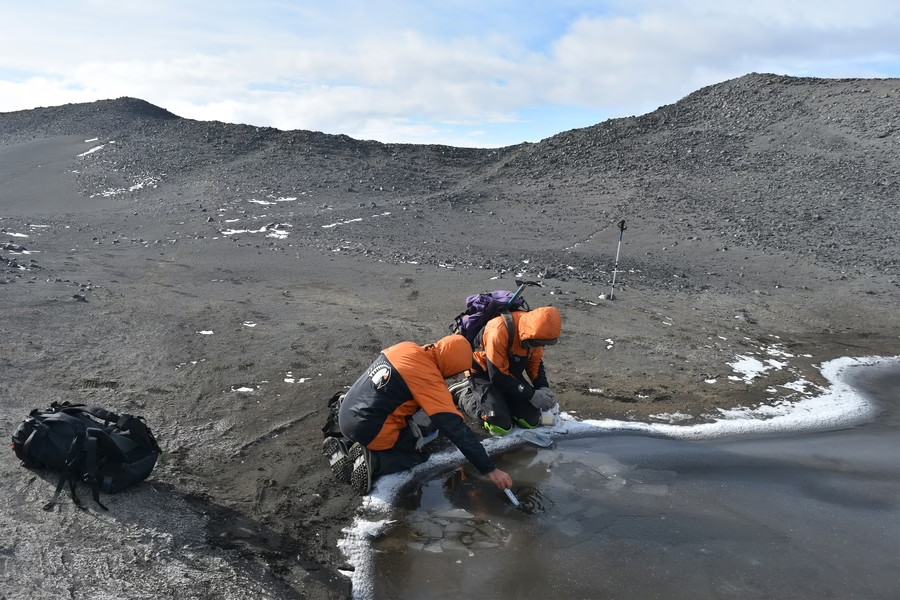
In a study published in Nature Communications, scientists from MIT have proposed that shallow meltwater ponds may have provided critical refuges for early complex life during one of Earth’s most extreme ice ages — the “Snowball Earth” period, which occurred between 635 and 720 million years ago.
During this time, the planet was believed to be encased in ice, with global temperatures plummeting to as low as -50°C. Despite the harsh conditions, complex cellular life — known as eukaryotes — managed to survive. The new research suggests that these life forms could have found sanctuary in small, briny pools formed on the surface of equatorial ice sheets.
“Meltwater ponds are valid candidates for where early eukaryotes could have sheltered during these planet-wide glaciation events,” said lead author Fatima Husain, a graduate researcher in MIT’s Department of Earth, Atmospheric and Planetary Sciences, in a media statement. “This shows us that diversity is present and possible in these sorts of settings. It’s really a story of life’s resilience.”
The team drew parallels between ancient equatorial ice sheets and modern Antarctic conditions. They studied contemporary meltwater ponds on Antarctica’s McMurdo Ice Shelf — an area first dubbed “dirty ice” by explorers in the early 20th century. These ponds, formed by sun-warmed dark debris trapped within surface ice, provided a modern analog to the possible melt environments of the Cryogenian Period.
Samples taken from these Antarctic ponds revealed clear signatures of eukaryotic life. Using chemical and genetic analysis, including the identification of sterols and ribosomal RNA, the researchers detected algae, protists, and microscopic animals — all descendants of early eukaryotes. Each pond supported unique communities, with differences shaped largely by salinity levels.
“No two ponds were alike,” Husain noted. “There are repeating casts of characters, but they’re present in different abundances. We found diverse assemblages of eukaryotes from all the major groups in all the ponds studied.”
These findings suggest that meltwater ponds — overlooked in previous hypotheses — could have served as vital “above-ice oases” for survival and even diversification during Snowball Earth.
“There are many hypotheses for where life could have survived and sheltered during the Cryogenian, but we don’t have excellent analogs for all of them,” Husain explained. “Above-ice meltwater ponds occur on Earth today and are accessible, giving us the opportunity to really focus in on the eukaryotes which live in these environments.”
The study was co-authored by MIT’s Roger Summons, Thomas Evans (formerly MIT), Jasmin Millar of Cardiff University, Anne Jungblut of the Natural History Museum in London, and Ian Hawes of the University of Waikato in New Zealand.
By uncovering how life may have persisted through Earth’s frozen past, the research not only deepens understanding of our planet’s history — it may also help inform the search for life on icy worlds beyond Earth.
Earth
In ancient India, mushy earth made for perfume scent
Kannauj, a city in the Indian state of Uttar Pradesh, offers a sustainable alternative in producing perfumes using traditional modes of distillation.

A sweet scent typically lingers around in the air at Kannauj, an ancient city in India’s most populous state of Uttar Pradesh. It’s an imprint of the countless occasions when it had rained, of roses that bloomed at dawn, and of sandalwood trees that once breathed centuries of calm.. Though mushy smells are not unique to Kannauj, the city utilized traditional distillation methods to make perfume out of these earthly scents.
Kannauj has had a longstanding tradition in perfume-making since four centuries ago. The city, colloquially known as the country’s ancient perfume capital, still uses rustic copper stills, wood-fired ovens, and bamboo pipes leading to sandalwood oil-filled vessels, or attar as it is colloquially known, to make their perfume. Though it gives a pre-industrial look, a closer peek would reveal an ecosystem of complex thermal regulation, plant chemistry, sustainability science, and hydro-distillation chemistry at work.
When synthetically-made but sustainable perfumes, and AI-generated ones share the spotlight today, Kannauj’s tryst with perfumes offer an alternative, sustainable model in traditional distillation, which is inherently low-carbon, zero-waste, and follow principles of a circular economy; all in alignment with sustainable development goals.
Traditional perfume-making is naturally sustainable
In industrial processing, hydro-distillation is a commonly done to separate substances with different boiling points. Heating the liquids produce vapors, which can later be liquefied in a separate chamber. Perfumers in Kannauj follow the same practice, except it promises to be more sustainable with the copper stills, a process colloquially known as dheg-bhakpa hydro-distillation.
There’s no alcohol or synthetic agents in use. Instead, they heat up raw botanicals – such as roses, vetiver roots, jasmine, or even sunbaked clay – to precise temperatures well short of burning, thereby producing fragrant vapor. The vapors are then guided into cooling chambers, where they condense and bond with a natural fixative, often sandalwood oil. Plant residue is the only byproduct, which finds use as organic compost to cultivate another generation of crops.

Trapping earthly scent to make perfume
In the past five years, Kannauj’s veteran perfumers noticed a quiet, but steady shift in their timely harvest and produce. Rose harvests have moved earlier by weeks. Vetiver roots grow shallower due to erratic rainfall. Jasmine yields are fluctuating wildly. The local Ganges river, which influences humidity levels essential for distillation timing, is no longer as predictable. For an entire natural aromatic economy built on seasonal synchrony, this uncertainty has rung alarm bells.
“The scent of a flower depends not just on the flower itself,” Vipin Dixit, a third-generation attar-maker whose family has distilled fragrance for decades, said to EdPublica.
“It depends on the weather the night before, on the heat at sunrise, on the moisture in the air. Even the soil has a scent-memory.”

As a result, perfumers in Kannauj have begun to adapt, applying traditional wisdom through a modern scientific lens. Local distillers are now working with botanists and environmental scientists to study soil microbiomes, measure scent compounds using chromatography, and develop community-based rainwater harvesting to ensure sustainable crop health.
One of the most surprising innovations is trapping petrichor — the scent of first rain — through earth attars. Clay is baked during extreme heat waves, mimicking summer conditions, then distilled to trap the scent of rain hitting dry soil. This aroma, called mitti attar, is one of the few scents in the world created from an environmental phenomenon; and not a flower.
At a time when the world is scrambling to save biodiversity, the humble attar may become a template for green chemistry — one that doesn’t just preserve scent, but also restores the relationship between science, nature, and soul.
Earth
A Region on the Edge: Ocean Heat, Island Peril, and a Global Wake-up Call
Real-world impacts in the South-West Pacific — from disappearing glaciers to cultural erosion in Fiji — illustrate what is at stake.

In a stark warning for the world, the World Meteorological Organization (WMO) released its latest report in June first week, The State of the Climate in the South-West Pacific 2024, painting a vivid picture of escalating climate extremes across ocean and land. The report, released to coincide with the 2025 Global Platform on Disaster Risk Reduction in Geneva and ahead of the 2025 UN Ocean Conference, warns that the South-West Pacific is already grappling with the climate future the rest of the world fears.
A record-breaking Year
2024 marked the warmest year on record for the region, driven by El Niño conditions and unprecedented ocean heating. Nearly 40 million square kilometers — over 10% of the global ocean surface — was scorched by marine heatwaves.
“2024 was the warmest year on record in the South-West Pacific region. Ocean heat and acidification combined to inflict long-lasting damage to marine ecosystems and economies. Sea-level rise is an existential threat to entire island nations. It is increasingly evident that we are fast running out of time to turn the tide,” said WMO Secretary-General Prof. Celeste Saulo in a recent media statement.
The heat was not limited to oceans. Extreme temperatures shattered records in Australia and the Philippines, increasing health risks and straining already vulnerable infrastructure.
Storms, floods, and vanishing ice
The report recounts an unprecedented cyclone season in the Philippines: 12 storms in just three months, affecting over 13 million people and displacing 1.4 million. Meanwhile, Indonesia’s last tropical glacier in New Guinea may vanish by 2026. Satellite estimates show a 30-50% ice loss since 2022.
Precipitation patterns swung to extremes. While Malaysia, Indonesia, and Papua New Guinea faced above-average rainfall and floods, parts of Australia and New Zealand were parched by drought.
The ocean in crisis
The annual sea surface temperature in 2024 was the highest since records began in the early 1980s. Combined with acidification and deoxygenation, ocean warming is devastating marine life and altering storm patterns.
Worryingly, the South-West Pacific sea-level rise already exceeds the global average, threatening islands where over half the population lives within 500 meters of the coast.
Displacement and cultural loss
The Fijian island of Serua, battered by floods and eroding shores, exemplifies the dire choices communities must make.
Despite government offers to relocate, many residents resist because of their deep connection to the land, or “vanua,” a concept embedding identity, spirituality, and ancestry.
“On two separate occasions, the island experienced such extreme flooding that it was possible to cross the entire island by boat without encountering land,” the WMO report said.
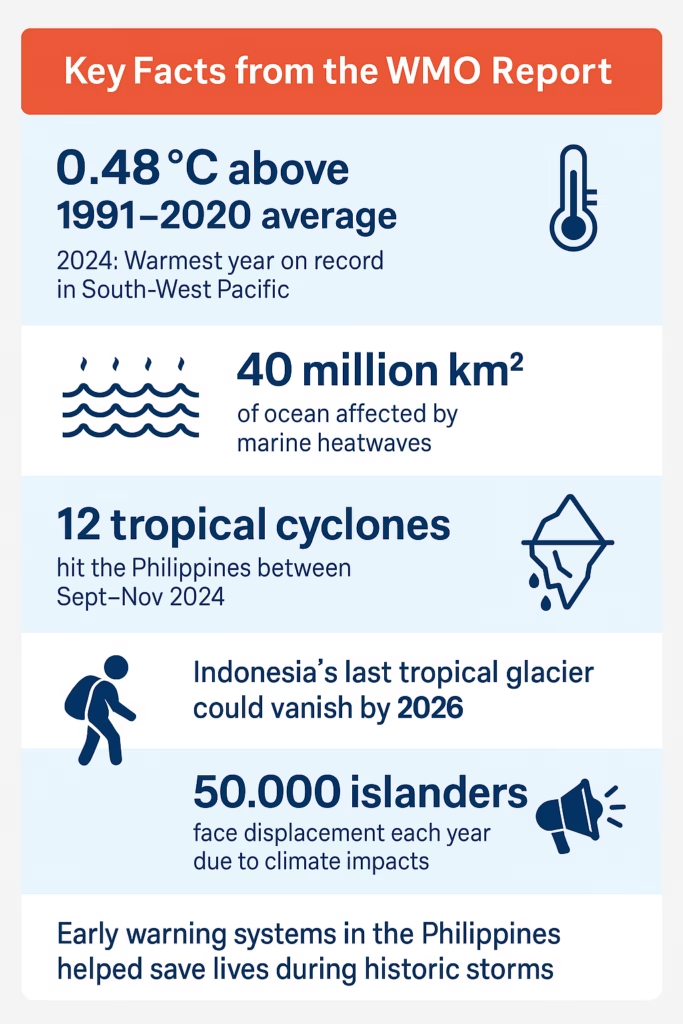
Hope in anticipation: Early warnings save lives
Not all is bleak. A case study from the Philippines showcased how early warning systems and anticipatory action helped mitigate the toll of the 2024 cyclone season. The Food and Agriculture Organization’s anticipatory action teams helped relocate fishing boats and distribute cash aid ahead of the storms.
“While the frequency of tropical cyclones may decrease, their intensity will rise. Building resilience is essential,” the report warns.
A Global Response: UNOC3 Signals Change, But Action Must Follow
As the WMO’s warnings echoed, the United Nations Ocean Conference (UNOC3) concluded in Nice, France (June 9-13, 2025), providing a parallel platform of hope and accountability.
- The High Seas Treaty reached 49 ratifications, nearing the 60 needed for enforcement.
- Nearly $10 billion in funding was pledged for ocean health, though experts note that the real need is $175 billion annually.
- Countries endorsed the 30×30 conservation goal and backed measures against deep-sea mining and plastic pollution.
“We must move from plunder to protection,” said UN Secretary-General António Guterres in his closing address.
These developments reinforce the urgency of the WMO findings. Real-world impacts in the South-West Pacific — from disappearing glaciers to cultural erosion in Fiji — illustrate what is at stake.
The South-West Pacific is not a distant front line. It is the epicenter of an unfolding climate reality. With international mechanisms like the High Seas Treaty nearing activation and early warning systems proving effective, the question is no longer whether we can respond — but whether we will act in time.
As the seas rise and the clock ticks, it’s not just islands at risk. It’s the future of global climate stability.
-

 Society4 months ago
Society4 months agoStarliner crew challenge rhetoric, says they were never “stranded”
-

 Space & Physics3 months ago
Space & Physics3 months agoCould dark energy be a trick played by time?
-

 Earth4 months ago
Earth4 months agoHow IIT Kanpur is Paving the Way for a Solar-Powered Future in India’s Energy Transition
-

 Space & Physics3 months ago
Space & Physics3 months agoSunita Williams aged less in space due to time dilation
-

 Learning & Teaching4 months ago
Learning & Teaching4 months agoCanine Cognitive Abilities: Memory, Intelligence, and Human Interaction
-

 Earth2 months ago
Earth2 months ago122 Forests, 3.2 Million Trees: How One Man Built the World’s Largest Miyawaki Forest
-

 Women In Science3 months ago
Women In Science3 months agoNeena Gupta: Shaping the Future of Algebraic Geometry
-

 Society5 months ago
Society5 months agoSustainable Farming: The Microgreens Model from Kerala, South India























